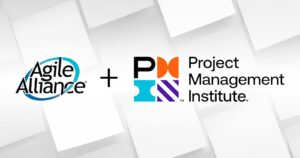When Lean Budgeting Lags other SAFe Practices
In almost all the SAFe implementations we’ve worked on, the adoption of Lean Budgeting has lagged behind the implementation of Value Stream Management and the running of Agile Release Trains. Traditional budgeting practices often clash with the efficient operation of ARTs and create unnecessary overhead.
The Challenges
When the Value Streams that the ARTs are focused on are not directly funded, the backlogs will usually contain initiatives that have fixed or short-term funding. This reflects the more waterfall-like approach that Finance departments are used to applying. However, this can result in a number of issues and challenges for the ARTs:
- Competing priorities among the Business Owners, who each have their own budgets to spend, are not resolved in a properly sequenced backlog, resulting in unclear directives to the ARTs on what they should be focusing on delivering
- PI roadmaps are not clearly defined and change often, leading to resources on the ART teams being reallocated to other initiatives, which can severely impact the ART’s ability to achieve their PI Objectives.
- The expectation to spend the funds allocated to individual initiatives results in the backlogs containing work items that don’t reflect the most valuable deliverables that would most benefit the customers and the organization as a whole. It’s just stuff that will allow the Business Owners to justify getting the same or more funds in the next budget cycle.
A Shift Towards Lean Budgeting
Overcoming these challenges requires shifting from project-based funding to value-stream funding or lean budgeting. This change might be challenging to achieve immediately, as it demands a significant mindset shift. It might be tempting to push for full adoption of Lean Budgeting at once, but organizations must remember that transformation should be a gradual process, not a shock to the system.
Here are some strategies to consider when moving towards Lean Budgeting:
- Educate: Start by educating stakeholders on the benefits of Lean Budgeting and its correlation with Agile frameworks. The alignment of Lean Budgeting with the objectives of ARTs can enhance the organization’s agility and response to changes.
- Showcase Success Stories: Sharing the experiences of other organizations that have successfully transitioned to Lean Budgeting can provide inspiration and a roadmap to follow.
- Pilot Program: A pilot program with a single ART or a small project reduces the perceived risk and can offer a tangible demonstration of the benefits of Lean Budgeting. Running an initial Participatory Budgeting workshop will also showcase the benefits of that practice, and if it includes a broad spectrum of participants, will go a long way to raising the profile of Lean Budgeting. Additionally, a pilot program will help define and clarify the challenges that the organization will have to deal with when they decide to move to Lean Budgeting
- Involve Leadership: Winning the support of top management is crucial. Highlight the potential for better decision-making, improved agility, and enhanced efficiency offered by Lean Budgeting.
- Assemble a Coalition: Build a coalition of enthusiastic supporters that includes the necessary level of leadership and key stakeholders required to start and run the pilot. Keep in mind that you will need the help of those coalition members to spread the word and generate broader organizational excitement and alignment.
- Align with Business Goals: Demonstrate how Lean Budgeting aligns with the overall business objectives. Emphasize how traditional budgeting might be an obstacle to full Agile transformation.
- Encourage Collaboration: Lean Budgeting thrives on collaboration. Encourage dialogue between the finance department and the Agile teams to understand each other’s needs and challenges.
- Incremental Implementation: Instead of rushing the process, start with one or two elements of Lean Budgeting and gradually incorporate more as the team grows more comfortable.
- Continuous Improvement: View the implementation of Lean Budgeting as a process of constant improvement. Regularly review the progress, collect feedback, and make necessary adjustments.
As part of this transition, organizations may need to hold collaborative meetings between Product Management and Finance to resolve backlog prioritization and resource allocation issues. Allowing stakeholders time to self-organize and reach a consensus can be a practical step towards a smoother transition.
While this transition towards Lean Budgeting can be complex, remember that it’s not an impediment to SAFe adoption. Every organization is unique, and it’s crucial to tailor the transition strategy to the company’s specific culture, structure, and circumstances. Patience is vital – significant changes take time to integrate fully and start yielding results. By adopting Lean Budgeting, your organization is setting up a foundation for enhanced agility, aligned goals, and efficient resource allocation within your Agile Release Trains.





